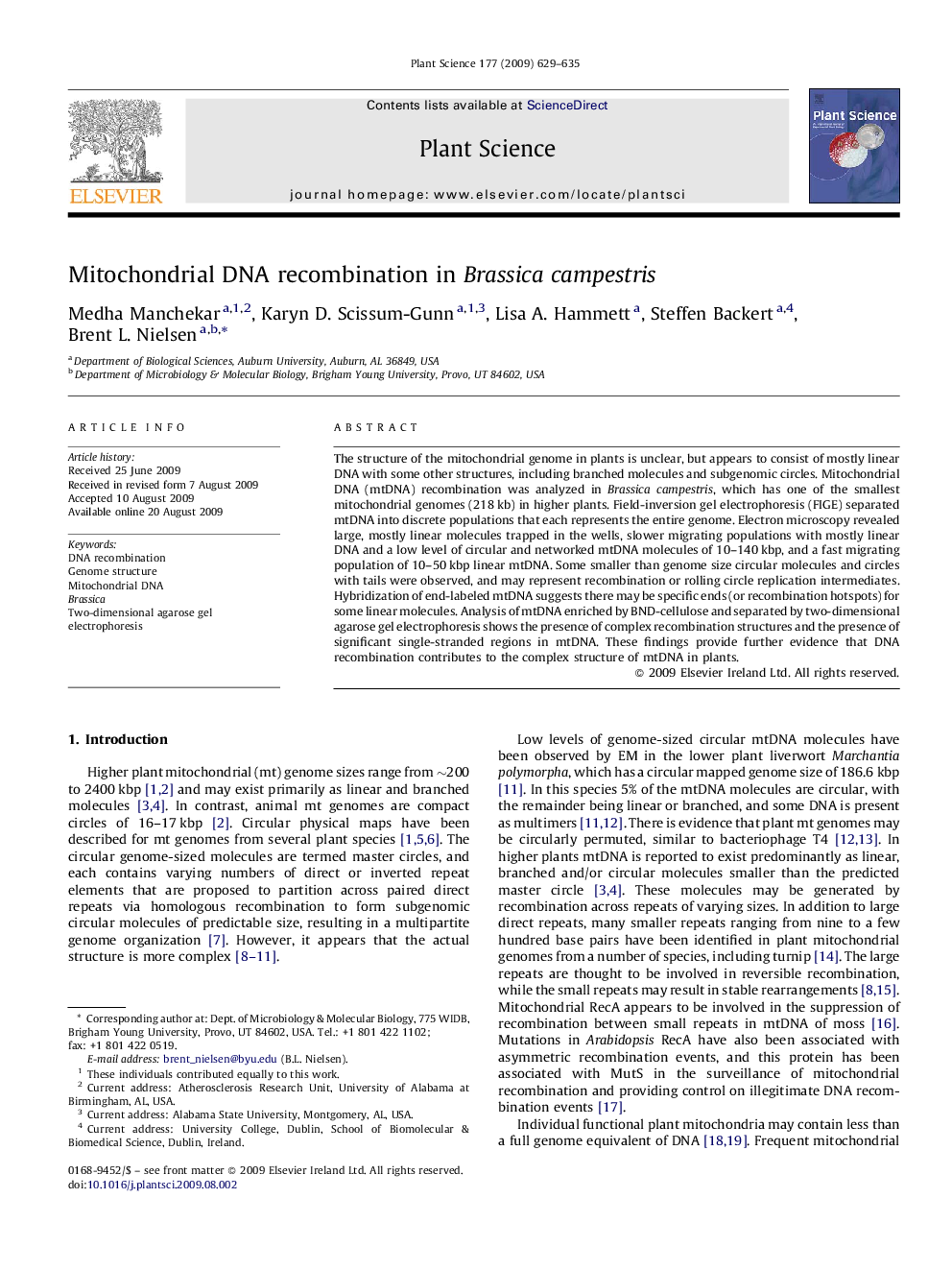| Article ID | Journal | Published Year | Pages | File Type |
|---|---|---|---|---|
| 2017877 | Plant Science | 2009 | 7 Pages |
The structure of the mitochondrial genome in plants is unclear, but appears to consist of mostly linear DNA with some other structures, including branched molecules and subgenomic circles. Mitochondrial DNA (mtDNA) recombination was analyzed in Brassica campestris, which has one of the smallest mitochondrial genomes (218 kb) in higher plants. Field-inversion gel electrophoresis (FIGE) separated mtDNA into discrete populations that each represents the entire genome. Electron microscopy revealed large, mostly linear molecules trapped in the wells, slower migrating populations with mostly linear DNA and a low level of circular and networked mtDNA molecules of 10–140 kbp, and a fast migrating population of 10–50 kbp linear mtDNA. Some smaller than genome size circular molecules and circles with tails were observed, and may represent recombination or rolling circle replication intermediates. Hybridization of end-labeled mtDNA suggests there may be specific ends (or recombination hotspots) for some linear molecules. Analysis of mtDNA enriched by BND-cellulose and separated by two-dimensional agarose gel electrophoresis shows the presence of complex recombination structures and the presence of significant single-stranded regions in mtDNA. These findings provide further evidence that DNA recombination contributes to the complex structure of mtDNA in plants.
